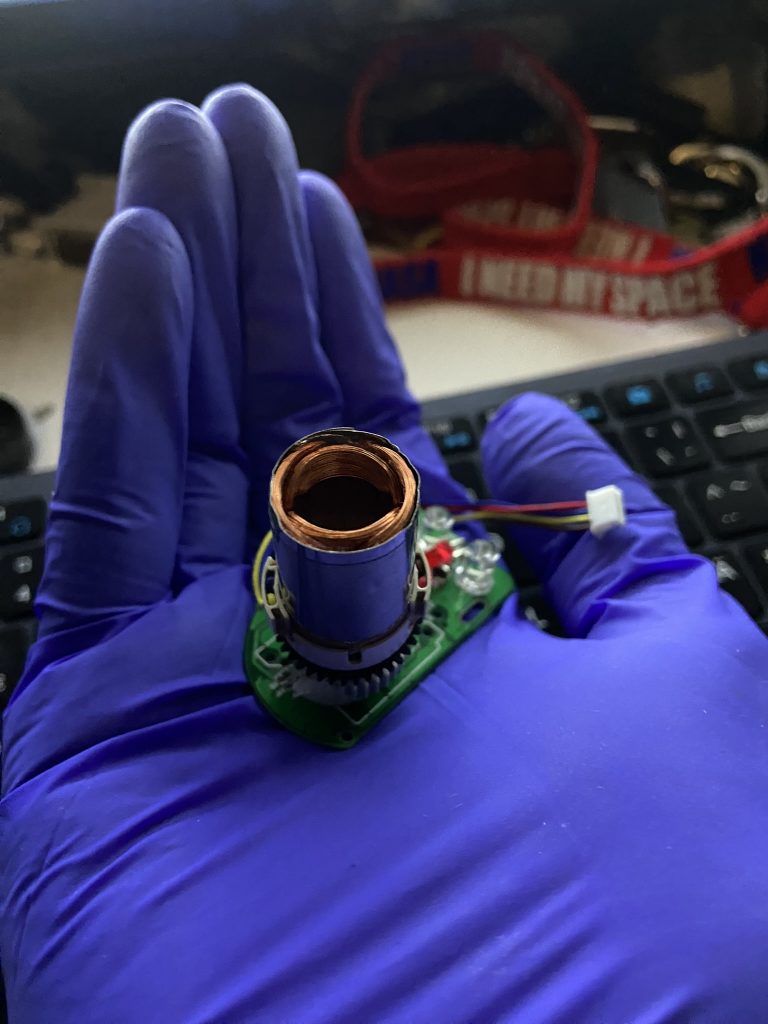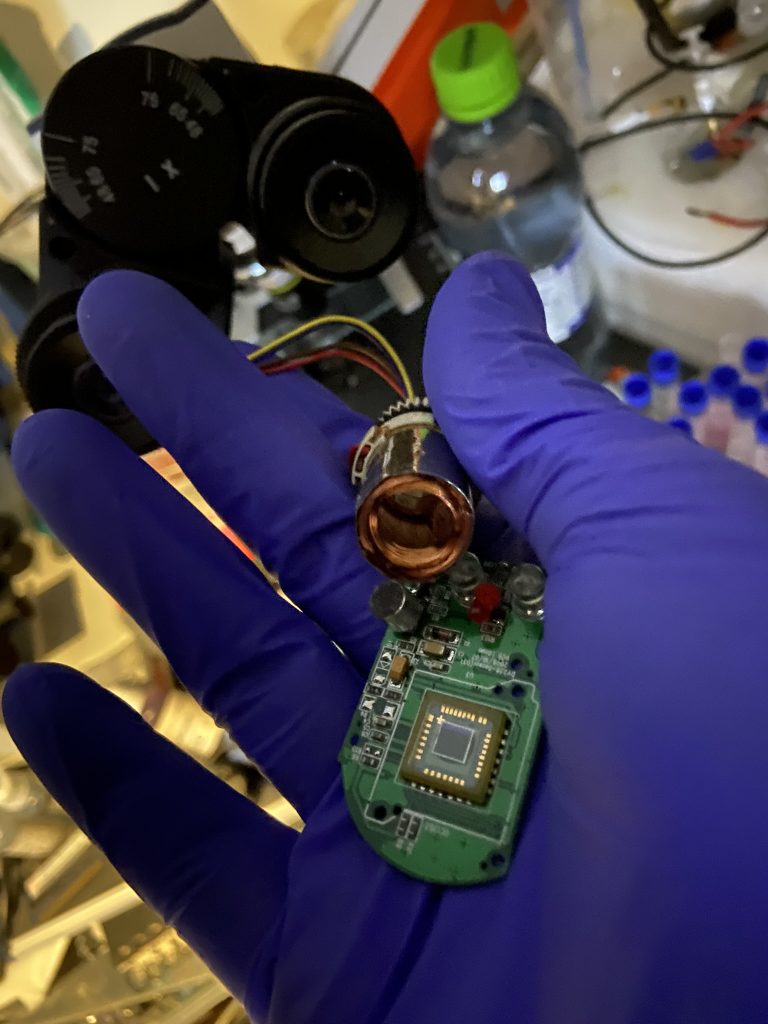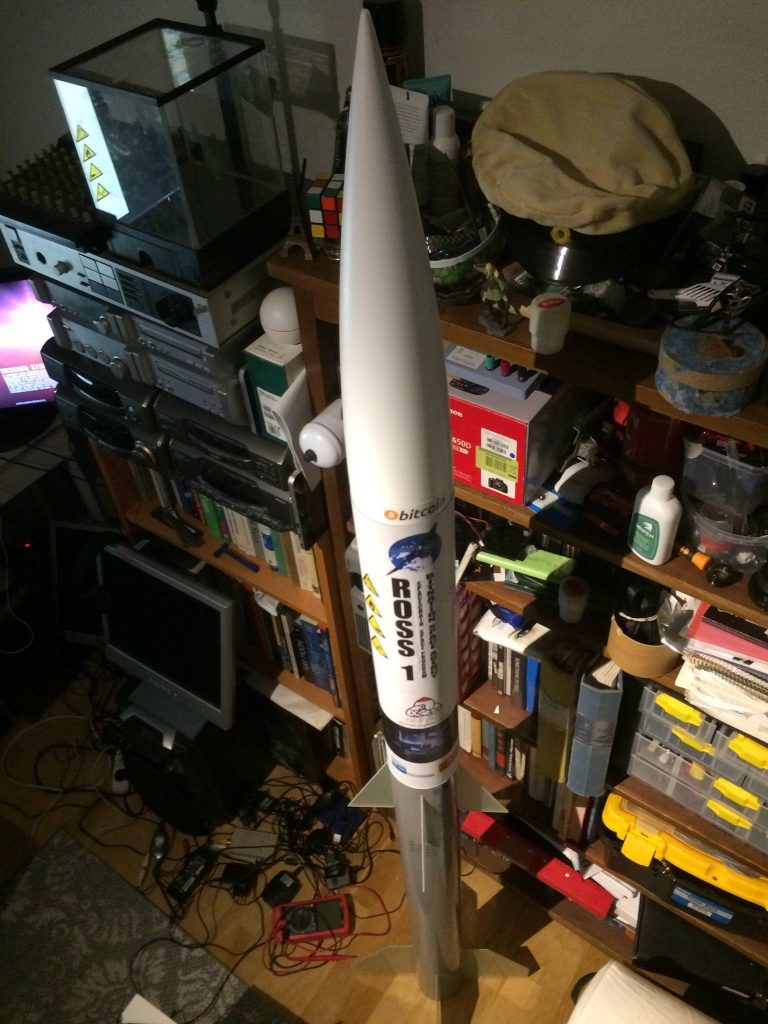SpaceChain Launches Bitnation Satellite
Despite it was still summer, the air was chill and the heavy rocket was not easy to transport to the boat waiting in the harbor, which would take it all the way to the launching platform on international waters outside Stockholm.
We were in a hurry, as the launch was scheduled for 04:09 in the morning, July 21, 2022, just before sunrise, as the payload would continue into the night, into a polar orbit, and get where the Val Allen belts were weak as possible, timing a CME coming from the Sun, catching the antimatter particles inside the northern lights – a very complex task.
The boat would have to travel 26 km from the coast into international waters to reach the pre-built platform. We’ve tried several times to reach an agreement with the Swedish Transport Authority about a secure location on land with a temporary restricted area for launching heavy rockets close to Stockholm. Still, they issued us a square in the highlands in northern Sweden.
A team was sent to the area, and they found that it was not an optimal place for launching rockets due to the rocky environment and mountains covering the line of sight, which was very important, especially in the initial moments of the launch, for receiving telemetry and controlling the rocket.
We were six men and women carrying the heavy rocket, with a weight of ~200 kg, mostly fuel – consisting of LOX (Liquid Oxygen), Nitros Oxide gas, Butane gas, Ethanol in the second stage, and a solid fuel mix of Ammonium Perchlorate, atomized aluminium, phosphor, red iron oxide, and an igniter consisting of pure Magnesium and Phosphor. The first stage also contained two containers of LOX and Nitrous Oxide gas that would flow through the solid fuel that used Epoxy as a binder to accelerate the burning.
As we reached the boat, I could smell the sea and felt the chilly wind coming from the dark waters of the Baltic Sea.
As the boat was leaving into the darkness of the sea, I watched it using my binoculars and stayed until its light was not visible anymore. However, I could see the rocket’s position on my iPad, as the rocket was equipped with a GPS communicating with one of SpaceChain’s satellites in geostationary orbit. After smoking a cigarette for the first time in several hours (due to the explosive nature of the fuel as we were carrying the rocket before), we began our almost two-hour drive back to the control room in central Stockholm.
The heat was the first thing I remember when walking into the control room. The heat from 10 different large screens and several smaller ones, the projector that showed the main telemetry data on the wall, and all the computers and servers running in the room.
We were late, and it was only 12 minutes before the launch.
I hurried up and put my smart card into the reader to lock up the main terminal.
Bad news – I could see a small band of clouds at low altitude on the radar screen, in yellow color, which indicated uncertainty – but “The show must go on”.
04.00 ROSS-1 navigation computer took over the launch control.
All I could do was abort.
Every minute felt like an hour, with sweat dripping from my face.
And then… 04.08 – the final countdown began.
I don’t think I’ve been this nervous ever in my life – 200 kg of very high explosive material, and it was going to catch fire any second now.
I heard the computer’s neutral voice like it was something ordinary – 10, 9, 8, 7, a second voice saying “engine ignition” while the countdown continued, 6, 5, 4, 3, 2, 1, 0 – and then the magical sentence “Nominal thrust – liftoff confirmed” was heard from the speaker connected to ROSS-1 navigational computer.
We had placed an iPhone 11 on a stationary tripod close to the shore, which broadcasted the launch live. I could watch it on the main big 55″ terminal screen, along with hundreds of different variables showing everything from speed and altitude to the temperature of different components.
At this point, ROSS-1 was flying itself – I had zero control but to abort the launch.
Everything happened so fast. 7 seconds into the launch, the computer showed that ROSS-1 had initiated stage 1 separation. Still, I did a fast calculation in my head and discovered that we had missed programming the impact of the enormous G-force on the sensors. There was still 50% fuel left in the first stage, and I hurried up to try and stop the separation. Still, it was already too late, so I injected the code into the firmware and sent it to our satellite, which uploaded it to the ROSS-1 navigational computer in real-time.
On my screen, I could see a big explosion with a radius of almost 100 km at the edge of space – it was somehow beautiful, but that was not in my mind at the time. I hoped the firmware upload was successful as the second stage ignited, and the color of the exhausting gases shifted from orange to white. It looked like a comet in the sky, coming out of a rainbow of burning fuel.
Here is the video of the launch of ROSS-1:
R.O.S.S 1 finally left for orbit at last – thanks to the support of BITNATION: Governance 2.0.
The first stage separated too early, although already in space, at 95-100 km altitude (a bit hard to calculate, as R.O.S.S 1 was travelling at Mach 10, roughly 12 382 km/h, which is 3,43 km/s) and a miscalculation lead to an early release of a stage with a half-empty fuel container.
The sensors showed that the stage was out of fuel. Still, we had forgotten to weigh in the enormous G-force at such a speed – so what you see in the video as a very expensive firework is actually a mix of nitrous-oxide gas, LOX (Liquid Oxygen), Ethanol, and Butane gas, mixed with the solid fuel. I adjusted for this quickly, and the second stage burned all the fuel, placing the payload into LEO (Low Earth Orbit).
R.O.S.S 1 payload remained in space for 6 weeks before eventually burning in the atmosphere, orbiting the planet once every 98 minutes from ~290 km altitude. The camera onboard recorded the view and saved it on the onboard computer NVMe disk, and every 98 minutes, we were able to download as much as we could at 2 Mbps in a 10-minute time window before it was out of LOS (Line Of Sight) from the ground station. The video in the post only shows the first 2 minutes in orbit as ROSS-1 travels over the Baltic Sea, over the Swedish city Haparanda, and then into the darkness of the North Pole and into the northern light where the onboard equipment with a very strong electromagnet started collecting antimatter for our experiment. We have 6 weeks’ worth of video material that needs to be edited, so watch out for future posts.
R.O.S.S 1 was launched 26 km from the coast outside Stockholm, 4 km into international waters, and the launch was captured by an iPhone 11 on a tripod on land.
According to the telemetry data, the rocket was somewhere between 95-100 km altitude when the first stage separation occurred (and that’s what you’re seeing – a lot of fuel exploding in space), precisely at the Kármán line.
As mentioned, we made a miscalculation and didn’t account for the G-force, and we thought the fuel canisters were empty while about 50% was still left.
I had to adjust for this in the control room immediately, and the second stage separated perfectly from the payload at 296.8 km altitude. The goal was to reach 350 km altitude, but we could acquire enough data anyway, detecting antimatter in the polar regions.
The payload continued to a perfectly circular polar orbit. We used a very sensitive device that we developed at SpaceChain Space Program in the early days (well, we didn’t invent it – just made it more sensitive), a fiber optic gyroscope (I think they mentioned it in an article in SpaceFlight Insider, like many years ago) for very precise calculation of the orbit, which was (according to the FOG) 42 077 km. (That’s probably the most sensitive FOG ever invented.)
Telemetry data:
Because of the small size of the satellite, the orbital speed was 25 761.57 km/h (7.1 km/s), and the payload with senors orbited Earth once every 98 minutes. (98.6).
It kept circulating Earth for 6 weeks 3 days, and 22 hours, and burned up in the atmosphere over the Atlantic Ocean, entering the atmosphere at a speed of 37 682.9 km/h.
Besides stage 1 of the rocket, no other parts made it back to Earth as we didn’t have any thermal protection.


